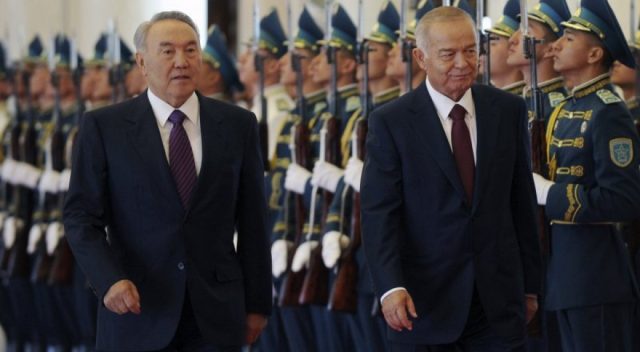
Generational Change in Central Asia about More Than Just Leaders
Publication: Eurasia Daily Monitor Volume: 13 Issue: 142
By:

The death of Uzbekistan’s President Islam Karimov at 78 has focused attention on the issue of generational change both past and present across post-Soviet Central Asia. Given the central role played by these five republics’ presidents in the aftermath of the Soviet Union, that is neither surprising nor inappropriate. In the short-term at least, the individuals who succeed Karimov in Uzbekistan and Nursultan Nazarbayev in Kazakhstan will play a major role in determining the future development of these countries as well as their relationship with the outside world.
Past leadership changes in post-Soviet Central Asia suggest that the impact of those prospective developments need to be put in the context of a broader generational change in the region. After all, the new leaders who emerge will, for the first time, not be primarily products of the Soviet system; and the peoples over which they rule will mostly consist of people who have little experience with the Soviet past and who are demographically, socially and politically different from those whom the Karimovs and the Nazarbayevs first ruled.
In short, the leadership transitions both in Uzbekistan now and in Kazakhstan at some point in the near future—even more than those that have already taken place in the other three Central Asian republics—are going to be less about the shift from Soviet to post-Soviet arrangements. Rather, as the dominant paradigm of transitology holds, they will represent specific forms of change in which national and especially longstanding and typically pre-Soviet patterns will play the key role. In short, the Soviet past is going to be less and less relevant for the understanding of what happening there. Instead, these countries’ national pasts will be more instructive. As such, the future of the region as a whole is going to be more differentiated because the five Central Asian republics are more diverse than their common Soviet past suggests.
All those aspects of the situation can be seen in Uzbekistan’s case. As such it provides a model for thinking about Kazakhstan. In addition, it is helpful for understanding broader Central Asia—a region that is moving in fits and starts beyond the Soviet and post-Soviet paradigms within which it has been analyzed up to now.
These points are made compellingly but indirectly by Andrey Kazantsev, the head of the analytic center of the MGIMO Institute for International Research. Specifically, Kazanstev presents these changes as a threat to Moscow’s interests in Tashkent and Central Asia more generally and urges the Russian government to press Uzbekistan’s elites to quickly accept a new personalistic dictator in order to keep the regional situation in check (RBC, September 2).
As he points out, half of the Uzbekistani population was born after the beginning of Karimov’s term, and just under 50 percent were born after the collapse of the Soviet Union. If one considers that only those over the age of 45 are likely to have experienced Soviet conditions in their most formative years, this means that more than two out of three Uzbeks are post-Soviet. Few have much experience with ethnic Russians, the largest share of which left Uzbekistan in the 1990s. Those who do are most likely guest workers in Russia, and these individuals often have anything but positive views of their former “big brother.”
Moreover, most of Uzbekistan’s nationals are poor and see their status depending less on their own efforts than on their attachments to one of the main historical clans, which not only divide power in Tashkent but determine many outcomes domestically. Kazantsev suggests that inter-clan fighting, the basis of Uzbek society, poses the greatest domestic threat to the possibility of the elevation of a new dictator; but at the same time, this situation makes such a dictator more necessary, he claims.
And finally, in sharp contrast to the late Soviet period when Karimov rose to power, today’s Uzbekistan is far more open to foreign influences, some positive and others negative. Uzbekistan is the focus of attention of a variety of outside powers, including but not limited to Russia, the European Union, China and the United States; its people are more likely to study English or Chinese than they ever were in the past. In addition, the country faces challenges from Uzbek nationalist and Islamist groups in Afghanistan and neighboring Central Asian countries.
If a Karimov-style strong man emerges in the near term, Kazantsev argues, Uzbekistan will be able to maintain stability and meet the immediate challenges. But even if it does so, that will not mean that it will escape problems down the road, problems that arise from “the complex system of balances among clans.” As an old Uzbek proverb notes, “the Samarkand clan rules, the Tashkent one counts its money, and the Fergana clan prays.”
That balance in politics and society depended upon Karimov, who created it as the basis of his power. But with his departure, the power relations among these clans will “inevitably change.” Consequently, a pre-Soviet arrangement in Uzbekistani society is going to play a dominant role in what is rapidly becoming the new post-post-Soviet Uzbekistan of today and tomorrow.




